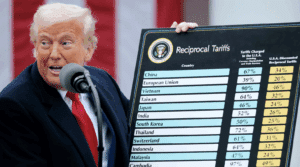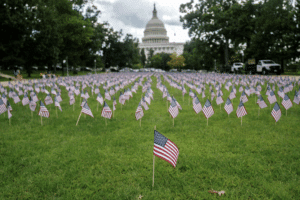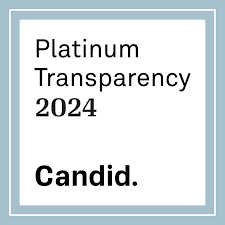 This morning, the Supreme Court heard oral argument in Learning Resources, Inc. v. Trump, a case which was consolidated with Trump v. V.O.S. Selections, Inc. The cases challenge whether a president can use the International Emergency Economic Powers Act (IEEPA)—a Cold War-era statute—to impose sweeping tariffs on imports by declaring an economic “emergency.”1
This morning, the Supreme Court heard oral argument in Learning Resources, Inc. v. Trump, a case which was consolidated with Trump v. V.O.S. Selections, Inc. The cases challenge whether a president can use the International Emergency Economic Powers Act (IEEPA)—a Cold War-era statute—to impose sweeping tariffs on imports by declaring an economic “emergency.”1
Here’s how we got here: In 2025, President Donald Trump’s administration announced broad “Liberation Day” tariffs on most imported goods, citing national security and trade deficits as the emergency. Importers—including the Illinois education-toy company Learning Resources—sued, arguing that IEEPA doesn’t let a president use emergency powers to create general revenue-raising tariffs.2 Lower courts issued conflicting rulings and stays,3 and the Supreme Court agreed to take the dispute on an accelerated schedule this fall.4
Learning Resources’ Argument
Learning Resources and allied challengers make two big points:
- First, they say IEEPA doesn’t authorize tariffs like these because the law is about blocking or regulating specific transactions tied to an “unusual and extraordinary threat,” not rewriting the entire tariff schedule for most imports.5
- Second, if IEEPA did allow that much, it would raise separation-of-powers problems—letting the president exercise Congress’ taxing and trade powers without clear limits (a nondelegation concern). Their briefs and supporters’ filings stress that Congress must speak clearly before handing over such economy-wide authority.6
Observers also note that challengers are likely to invoke the Supreme Court’s “major questions doctrine,” which requires clear congressional authorization for executive actions with “vast economic and political significance.” If billions or even trillions of dollars in tariffs are at stake, they argue, IEEPA’s general emergency language can’t carry that load.7
The Trump Administration’s Argument
The Trump administration defends the tariffs by reading IEEPA broadly: when a president declares a national emergency tied to foreign commerce, the statute lets the president regulate imports—including by imposing tariffs—to respond to the threat. They point to historic precedents where presidents used related authorities in economic emergencies and say courts should defer to the executive on national security judgments.8
Supporters also suggest that doctrines limiting agencies (like major questions) shouldn’t hamstring the presidency itself in foreign-affairs or national-security contexts—an area where the executive traditionally enjoys broader discretion.9
What Observers and Experts Are Saying
Legal commentators across the spectrum see these cases as a separation-of-powers test. Some, including conservative and libertarian scholars filing amicus briefs, argue that allowing IEEPA to support sweeping tariffs would gut Congress’ constitutional role over taxes and trade. They underscore nondelegation concerns and warn that broad emergency powers can’t replace precise statutes.10
Other analysts focus on the Supreme Court’s consistency: having used the major questions doctrine to strike down big Biden-era actions, will the justices apply the same standard to a Republican president’s tariff program? Vox’s preview calls the dispute a “loyalty test” for the Court’s stated principles. Meanwhile, SCOTUSblog frames the argument as both economically massive and a crucial check on presidential power.11
Conservative Washington Post columnist George Will adds that the ruling could either bolster or weaken the Court’s role in policing the boundaries between Congress and the president.
What Different Rulings Could Mean
If the Supreme Court sides with Learning Resources: Wide-ranging tariffs imposed under IEEPA could be struck down or limited, forcing the administration to seek new, specific authority from Congress. The decision might also strengthen major questions and nondelegation limits, signaling that presidents (of either party) can’t rely on general emergency laws for huge economic policies. Businesses could see tariff relief and more predictability—but future presidents could have less unilateral leverage in trade fights.
If the Court sides with the administration: The ruling could expand presidential latitude to use emergency powers in trade policy, at least where the executive asserts national security reasons. That outcome might weaken the major questions doctrine in the presidential (as opposed to agency) context and encourage future administrations to use emergency statutes for big economic moves without fresh congressional approval. Markets could face more uncertainty as tariff policy and economic policy shift with each administration.
If the Court issues a narrow decision: The justices might resolve only part of the dispute—e.g., reading IEEPA to permit some targeted trade measures but not across-the-board tariffs—or send issues back to lower courts, leaving short-term uncertainty but clarifying which tools presidents can use and where Congress must act.12
Discussion Questions
- What have you heard about tariffs? How have they impacted you, your family, and your community?
- What are the strongest points in Learning Resources’ argument against a president’s authority to impose tariffs? Do you find them convincing? Why or why not?
- How does the Trump administration justify using IEEPA for its tariff policy? Do you find it convincing? Why or why not?
- How does this case reflect the Constitution’s system of checks and balances between the legislative and executive branches?
- What does this case reveal about how emergency powers can be used—or potentially abused—in a democracy?
- The major questions doctrine says that major economic decisions require clear congressional approval. Do you think the Supreme Court should apply this doctrine equally to all presidents? Why or why not?
- If you were a Supreme Court justice, how would you decide this case? What principles or values would guide your reasoning?
As always, we encourage you to join the discussion with your comments or questions below.
Sources
Featured Images: Chip Somodevilla/Getty Images
[1] Supreme Court of the United States, November 2025 Argument Calendar: https://www.supremecourt.gov/oral_arguments/argument_calendars/MonthlyArgumentCalNovember2025.pdf
[2] Reuters: https://www.reuters.com/legal/government/us-supreme-court-declines-speed-up-decision-taking-up-fight-over-trump-tariffs-2025-06-20/
[3] Associated Press: https://apnews.com/article/b9c77788211d96f59d253f6c011d69cb
[4] SCOTUSblog: https://www.scotusblog.com/cases/case-files/learning-resources-inc-v-trump/
[5] U.S. Supreme Court Docket, No. 24-1287, Learning Resources, Inc. v. Trump: https://www.supremecourt.gov/docket/docketfiles/html/public/24-1287.html
[6] Ibid.
[7] Petitioners’ Certiorari Filing: https://www.supremecourt.gov/DocketPDF/24/24-1287/363370/20250617121408066_No-___Learning_Resources_Petition_For_A_Writ_Of_Certiorari_Before_Judgment.pdf
[8] U.S. Supreme Court Docket, No. 24-1287, Learning Resources, Inc. v. Trump: https://www.supremecourt.gov/docket/docketfiles/html/public/24-1287.html
[9] SCOTUSblog: https://www.scotusblog.com/2025/10/trumps-tariffs-face-supreme-court-scrutiny/
[10] Ibid.
[11] Vox: https://www.vox.com/politics/466510/supreme-court-trump-tariffs-loyalty-test-major-questions
[11] Oyez: https://www.oyez.org/cases/2025/24-1287
 In a world overflowing with information, teaching our students in grades 7-12 to be discerning consumers and creators of media isn’t just a good idea—it’s an imperative for the future of our democracy. As educators, we have a vital role in equipping students with the skills to navigate the complex landscape of news and information, fostering active, responsible citizenship and meaningful engagement in deliberative democracy.
In a world overflowing with information, teaching our students in grades 7-12 to be discerning consumers and creators of media isn’t just a good idea—it’s an imperative for the future of our democracy. As educators, we have a vital role in equipping students with the skills to navigate the complex landscape of news and information, fostering active, responsible citizenship and meaningful engagement in deliberative democracy. 
 On August 12, 2025, the White House sent a letter to the Smithsonian Institution stating that it would be “leading a comprehensive internal review of selected Smithsonian museums and exhibitions.”1 This review aims to ensure alignment with President Donald Trump’s vision to “celebrate American exceptionalism, remove divisive or partisan narratives, and restore confidence in our shared cultural institutions.”2
On August 12, 2025, the White House sent a letter to the Smithsonian Institution stating that it would be “leading a comprehensive internal review of selected Smithsonian museums and exhibitions.”1 This review aims to ensure alignment with President Donald Trump’s vision to “celebrate American exceptionalism, remove divisive or partisan narratives, and restore confidence in our shared cultural institutions.”2








